Ditch your personas. Here are 17 alternatives you can use

Personas are one of those ‘things UX designers’ do. Here are some alternatives for you to use! 💪
If I say persona, you probably have an image in mind of what they look like: a name and a photo, some sliders, a quote, etc. I call these ‘template-personas’ and they are not useful. At best they offer a false promise: research once, reuse everywhere. At their worst, they are misleading us with stereotypes. Here are 17 alternatives you can use.

☝️ Tip, bookmark this article for future projects! ☝️
How to use these tools and methods #
All tools below contribute to the following steps in your research process:
- Segment research findings
- Communicate those findings
- Create empathy with your audience
- Make decisions
Yes. The end-goal of all these tools is to make decisions and not empathizing. I’ll sum up my main findings at the end of the article, but the most important conclusion is that you pick the method that solves your current problem. Be very wary to reuse any research for other problems!
The alternatives to personas #
Here’s a list of tools and methods to segment your data and communicate research-findings. Use them to can build empathy with your audience (and their contexts) and make decisions to create better services 💪
In no particular order…
1. Cooper’s original personas #
Alan Cooper is the ‘godfather’ of personas. This is what he wrote in the nineties:
Even though the variation among the users was dramatic, a clear pattern emerged after just a few interviews. The users fell into three distinct groups […] I had to describe those user models to the Sagent team. So I created Chuck, Cynthia, and Rob.

Cooper’s personas are an amalgamation of multiple interviews represented by a story. These personas give a feeling of the people Cooper interviewed, and can offer some guidance on making decisions. For example, based on the description we can foresee some choices in shopping-features for our platform: this person likes to find the exact items she’s looking for (extensive filter-options) and she makes note of items she doesn’t buy (saving items to a list).
A lot of the criticisms of personas are true for Cooper’s version as well (it brings to mind some stereotypes about white middle-aged women for instance), but the great thing about Cooper’s original peronas is that they at least show context.
2. The OMG-how-much-research-did-you-do-persona #
Amber Westerholm-Smyth wrote a bombshell — 17-minute read — article called “Your personas probably suck. Here’s how you can build them better” in which she explains how she created “better personas”.
These better personas are built on 2,700 minutes of interviews with their target audience, analyzed using complex Google Sheet formulations and Miro boards stretching several meters. It’s incredibly sophisticated research, and Amber takes you through it with amazing talent.
So what are these better-personas? They look quite similar to the template-personas, but lack any demographics or personification. Instead they contain a short story, tags, sliders and quotes.
The team uses the names of Greek gods to identify the different personas (“to align their fables with our own narratives”), and gave each persona its own color-scheme and graphics.
With the personas come a website (with quotes, video and sound clips) and a deck of cards with quotes.
These personas solve some of the issues. The lack of demographics (age, gender, etc) means fewer subconscious biasses*. But they still serve as static representations of a group of people: does everybody from your audience really fit into one of these personas?

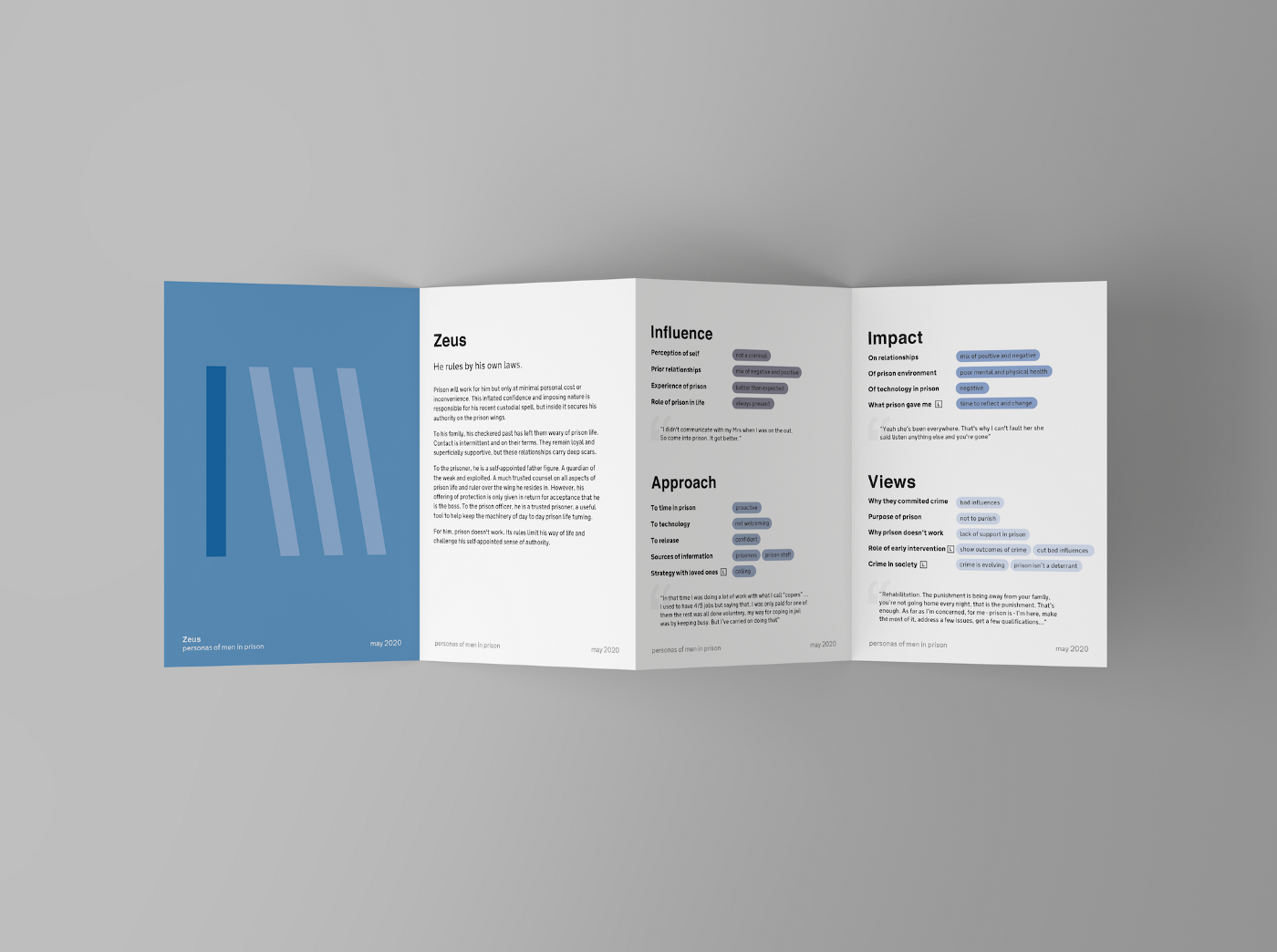
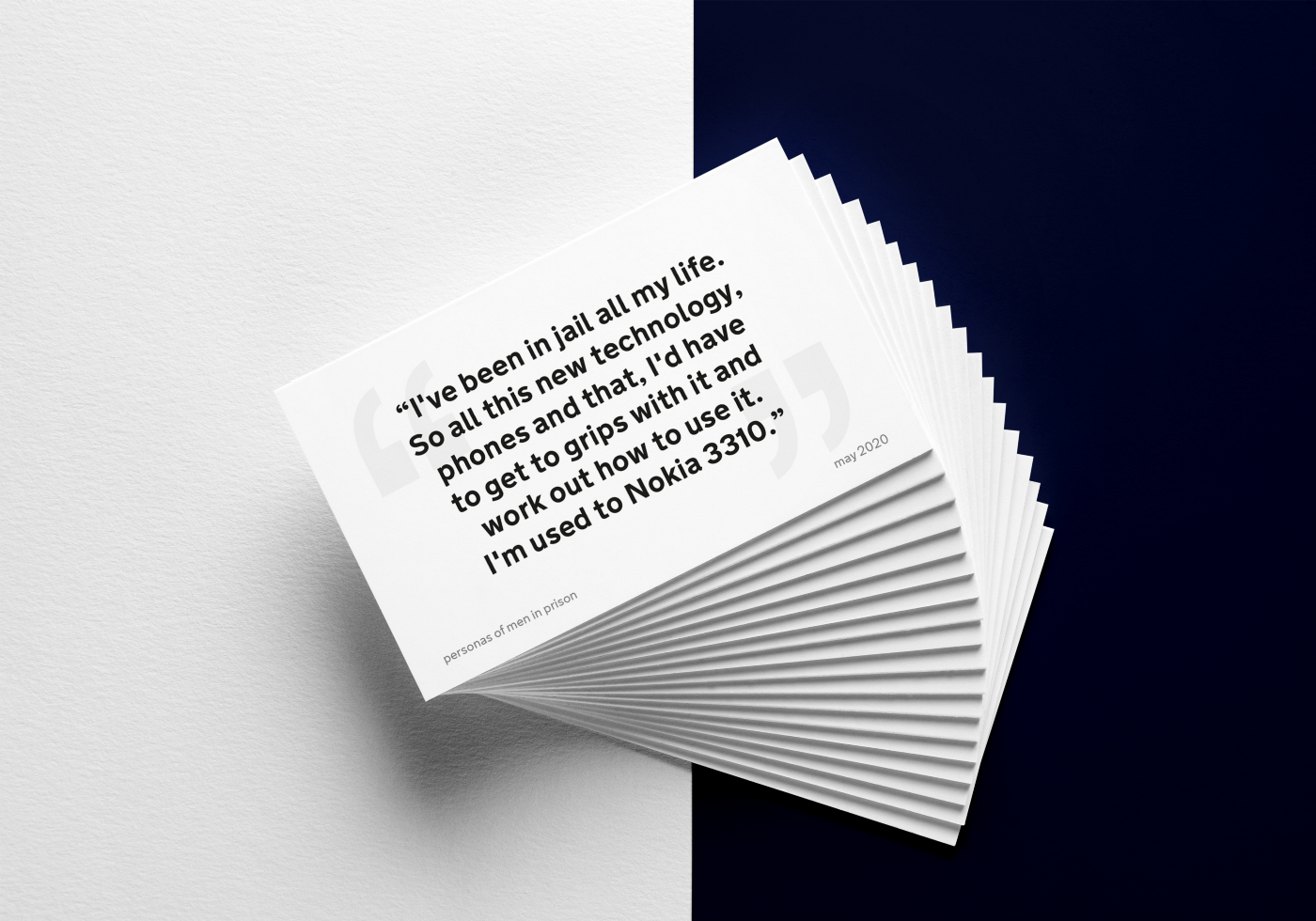
*Unless you know the Greek gods because you read Stephen Fry’s excellent Mythos , that is.
3. Persona groups (or ‘archetypes’) #
I found the term Persona Groups in a talk by Akil Benjamin during Sofa Conf 2020, and it really resonated with me. Instead of creating very concrete personas, he created abstract groups (his examples: ‘need a nudg’r’, ‘newbies’, ‘the stop starter’):

These groups emerge from the data (just like personas should), but they focus on only one ‘trait’. By dividing your audience into these groups, you can make decisions (should we focus on group A or B? Is this feature useful for all groups?).
The benefit of persona groups is that we can support the groups with additional data: “based on a survey, we can say 80% of our audience falls into group ‘newbies’.”
We use this same principle in Pokemapping, but we extend the idea into multiple groups and connect them to user-journeys.
This is very similar to how Netflix defines you as a person so it can suggest movies to you. You might not know it, but the almighty-algorithm has put you in several groups based on the movies you watched and skipped. For Netflix, you are defined by your membership of several groups: “Japanese murder-mystery movies from before 1975”, “super-hero movies with dark undertones”, “romantic comedies with lots of plants based in Guatemala”.
One way to create these persona-groups is to think of dimensions on which you can ‘rate’ the people in your target audience, and creating a diagram:
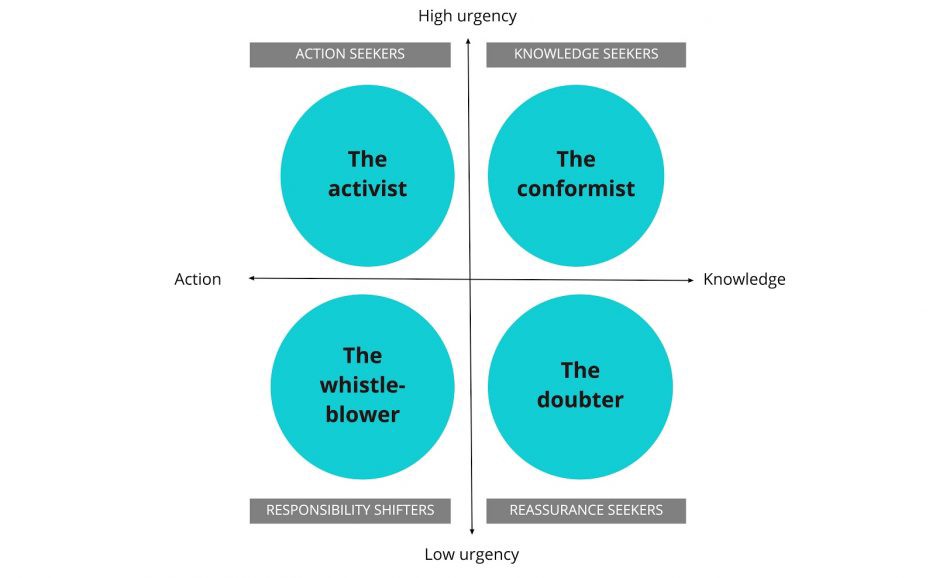
4. Roles #
Very closely related to persona groups is the idea of ‘roles’. In persona groups you take any possible trait, with roles you specifically look at what a group trying to achieve.
Roles are based on a goal, a task or defined as a job-to-be-done.
We used this for a project involving library-employees. These people have differing functions (manager, analyst, bookkeeper) and employment-types in the organization (freelance, volunteer), but there are a lot of similarities in the tasks they do.
When we segment our data on those tasks, patterns emerge clearly.

Similar to roles, you can also create persona is by ‘motivation’: why do people use your service.
5. Minimalist personas #
In her almost-a-book article “When less is more: minimalist personas in UX” Melanie Polkosky describes what’s wrong with personas — it’s a great read. She also proposes an alternative: Minimalist Personas.
What are minimalist personas? They are simple representations custom for each project, containing only those variables that you as a designer select that have an impact on your design. Melanie suggests one to four key variables that range on different levels (for example: “ variable: engagement, levels: aware, interested, fully engaged” ).
In a project on training managers at restaurants, Melanie came to the following personas:
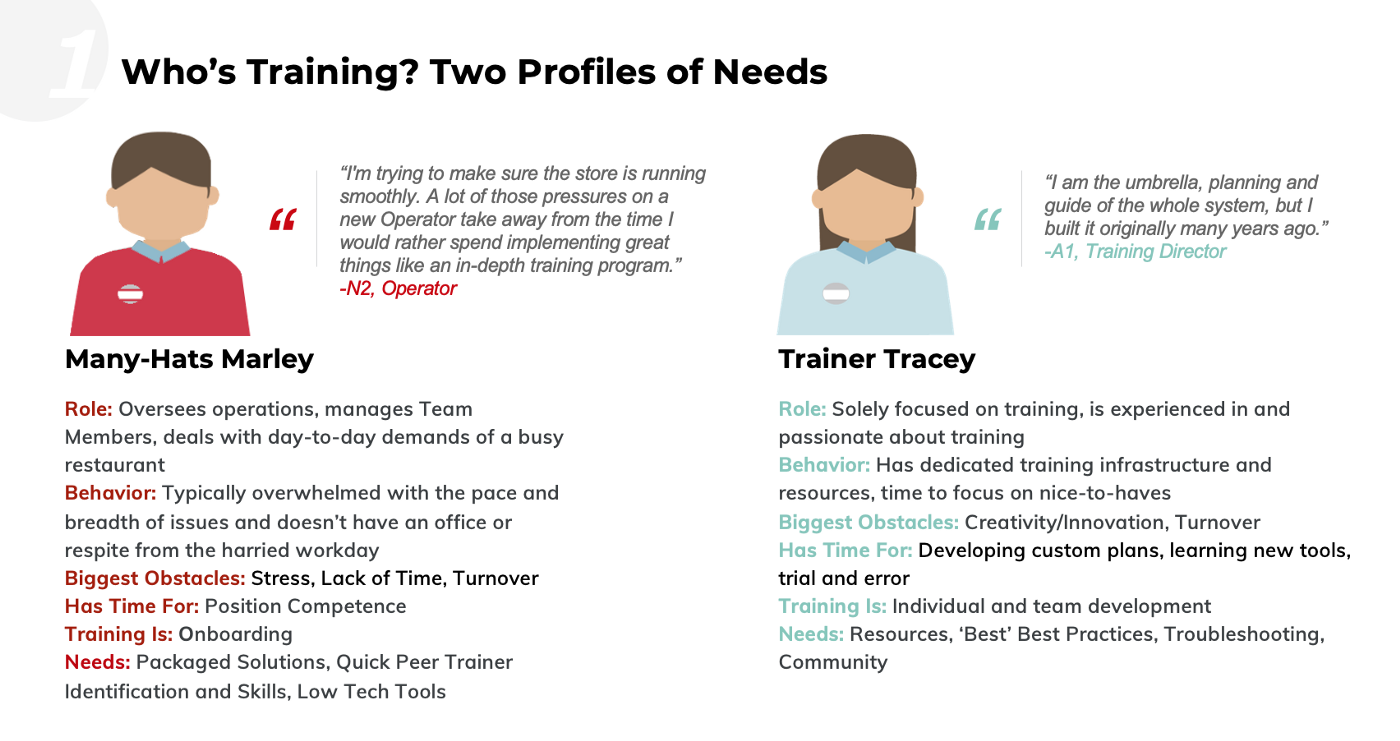
In another project for a university, Melanie grouped her audience on a spectrum ranging from aware to engaged:
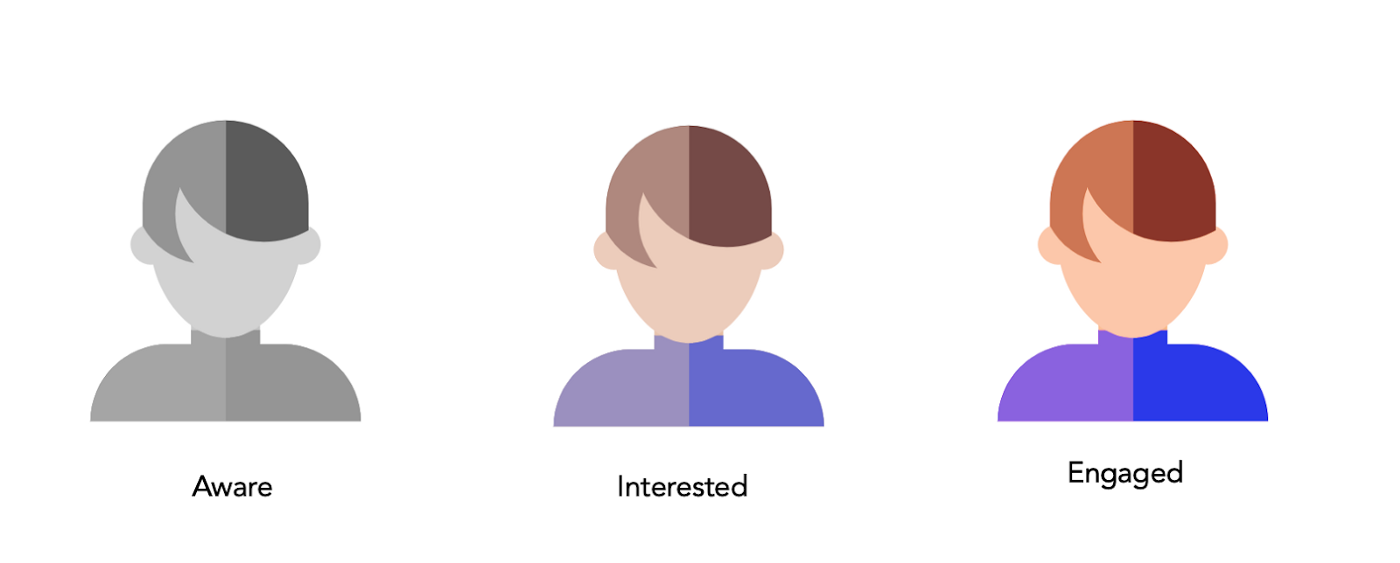
6. Persona spectrums #
Doug Kim from Microsoft Design suggests a modular way of looking at your audince in the classic article “Kill your personas”.
The core idea is to look at traits of your audience (similarly to persona groups!), and divide those traits onto a spectrum. The example Doug gives is based on accessibility: “There are roughly 20,000 people in the US with one arm. But if you add up the numbers of people with one arm, people with a temporary wrist injury or a broken arm, and folks with one free hand in a specific circumstance (like new parents lugging a baby around), you’re at 20 million in the U.S. alone.”
If that text was theoretical, this example hopefully makes it clear. Let’s say you want to make your website accessible for visually-impaired people. You could create a persona-spectrum around vision like this:

Doug also has some good insights on traditional personas:
[Personas] are inherently an amalgamation, an average of attributes that we imagine our average customer has. And there’s no such thing as the average customer
Well done, Doug.
Doug gives examples based on accessibility. But ‘spectrums’ are everywhere. For example, one of our clients made a persona spectrum (without calling it that) by up their audience of data-scientists into five categories based on the level of proficiency in data-research:
- eggs, people who digitize information but don’t use it
- squirrels, collectors who clean the information and make it available for research
- pirates can create connections in the data
- wizards can predict the future based on data
- kings, who influence the organization to make predictions come true
7. Mindsets #
A specific type of persona spectrums is to l ook at the mindset of people. You can use the dimension ‘confidence’ for instance and create a spectrum there going from terrified to overconfident.
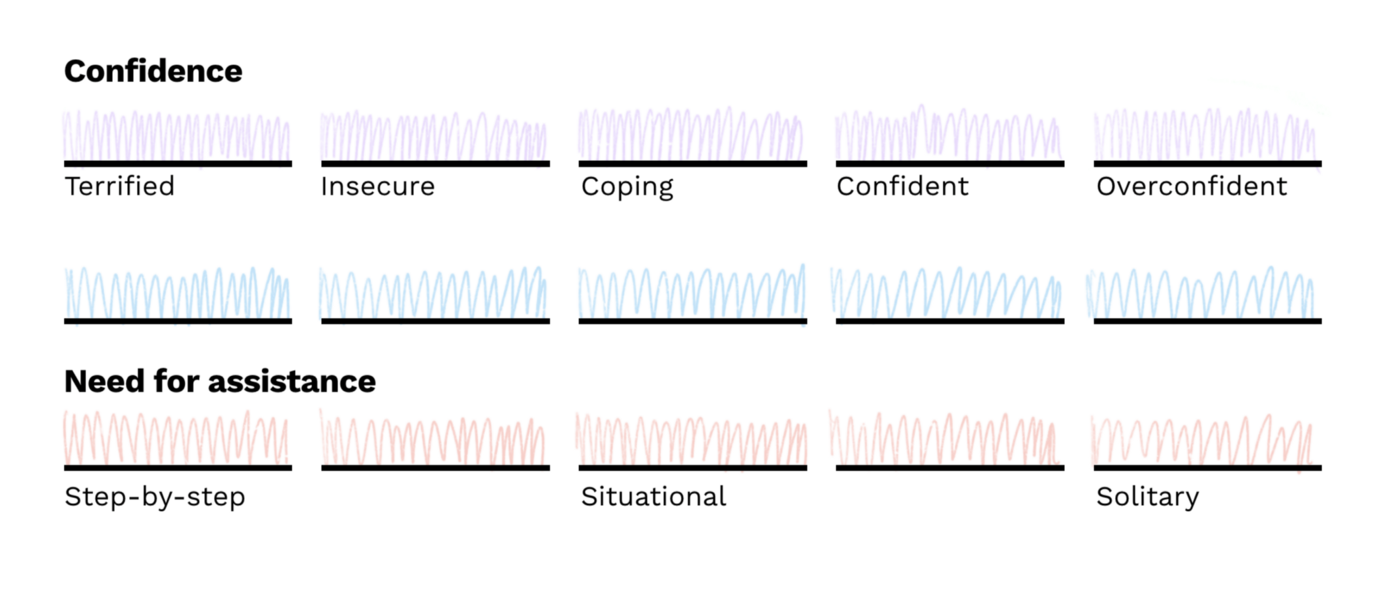
You can then take that mindset and map it back to a descriptor that’s eerily similar to a persona-template…
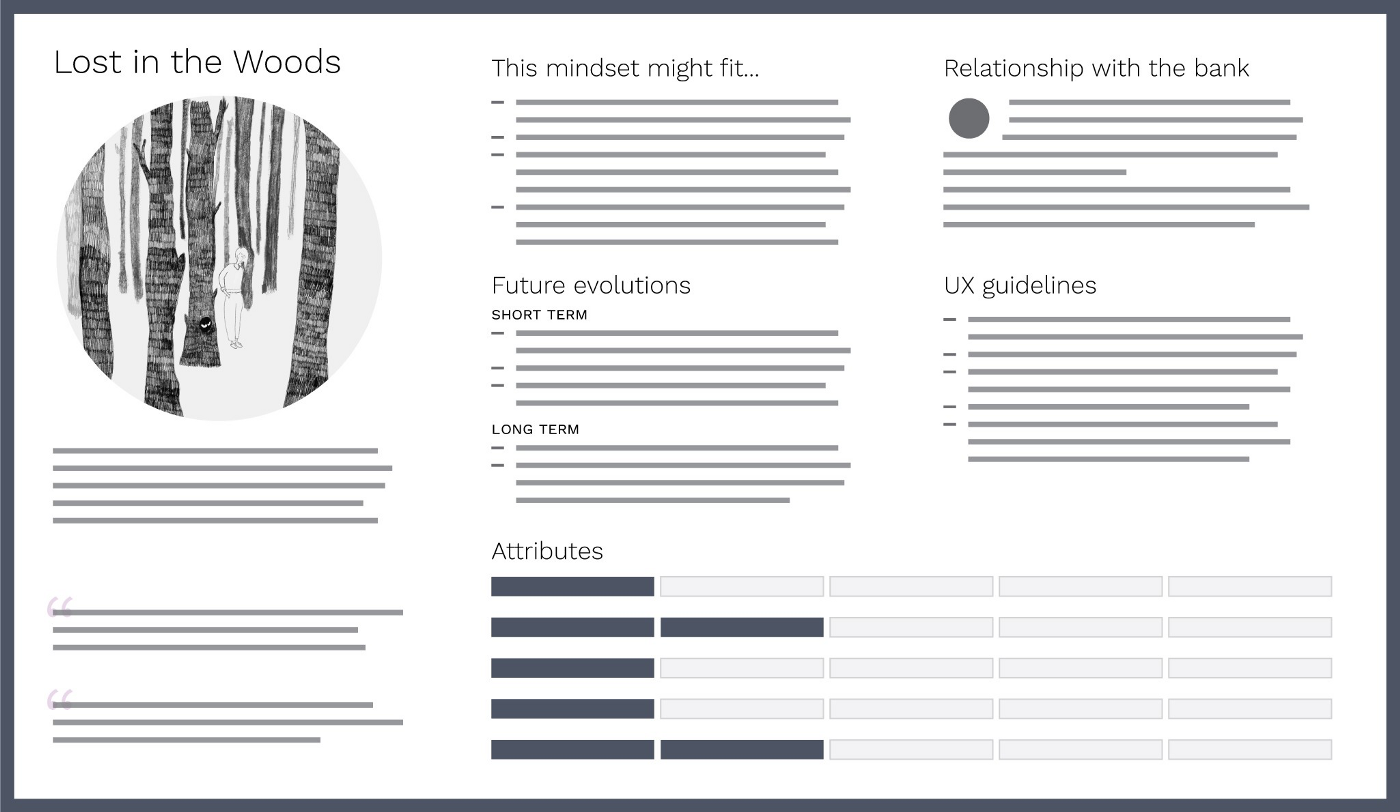
… but the cool thing is that these mindsets still represent a group of people and that one person can be in multiple mindsets or shift from mindset to mindset. This way you capture a much more diverse set of voices.
8. Pokemapping #
At Angi Studio we’ve also developed our own process of creating representations of the target audience: Pokemapping.
It’s a simple three step process to convert research into action:
- Do interviews
- Write summaries as ‘user cards’
- Create groups from these user cards
This results in persona groups, based on findings from the interviews. You can group based on role, goal, spectrum, motivation, or anything else that bubbles up from the research you did.
These groups can be used as-is, or as the starting point for any method/tool described in this article.
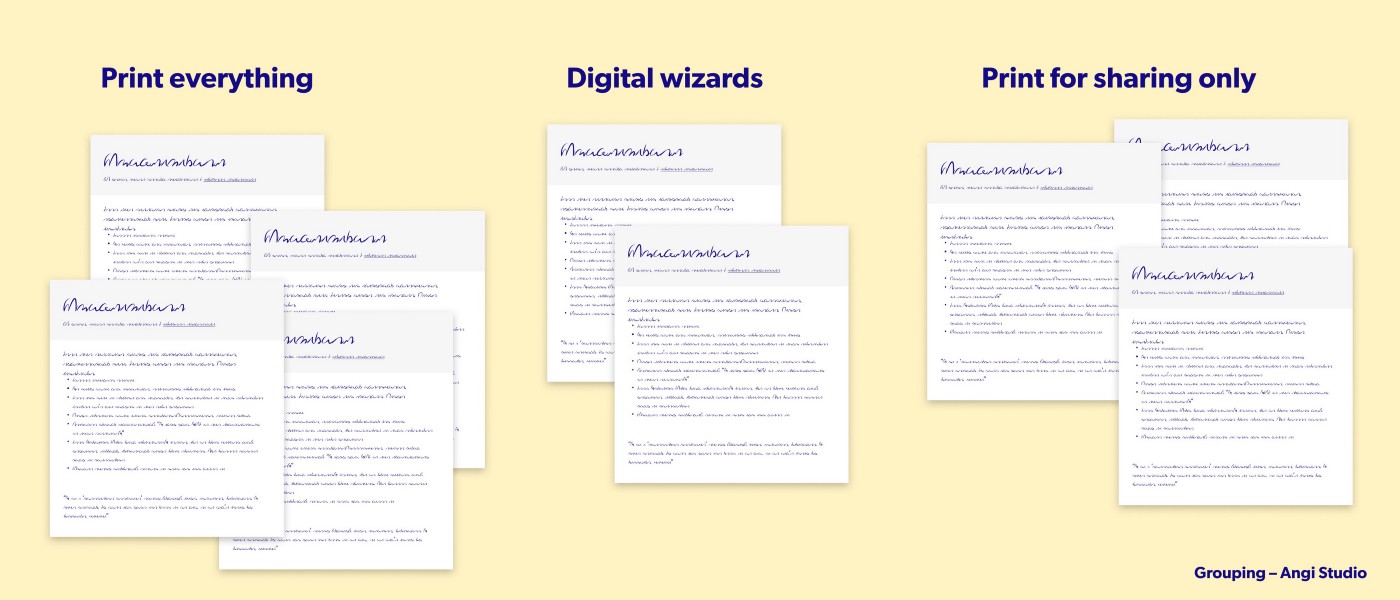
Another cool thing about the Pokemapping-process is that the interview-summaries are useful tools as well. They communicate a real person, instead of a fake persona.
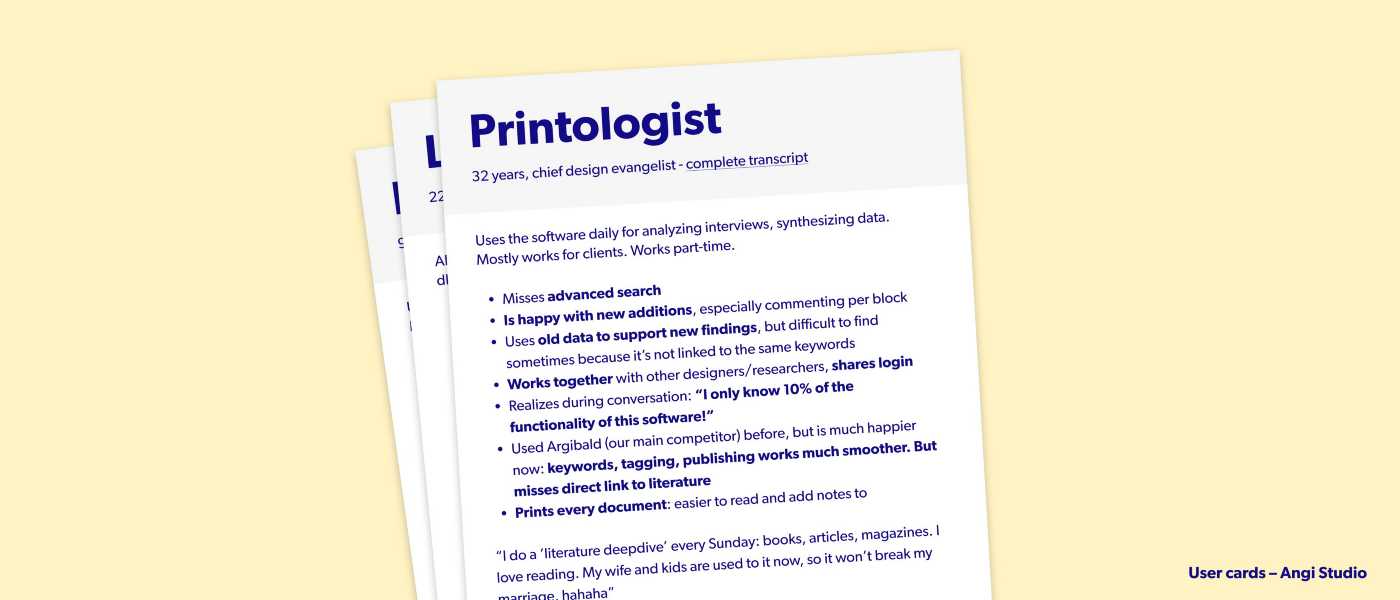
9. Behavioral archetypes #
A behavioral archetype is another specific type of a persona group where you focus on (you guessed it): behavior.
The cool thing about behavioral archetypes is that you add in ‘moments’, which put the archetypes in a ‘state’. This shows that people change and how they are different in another context.
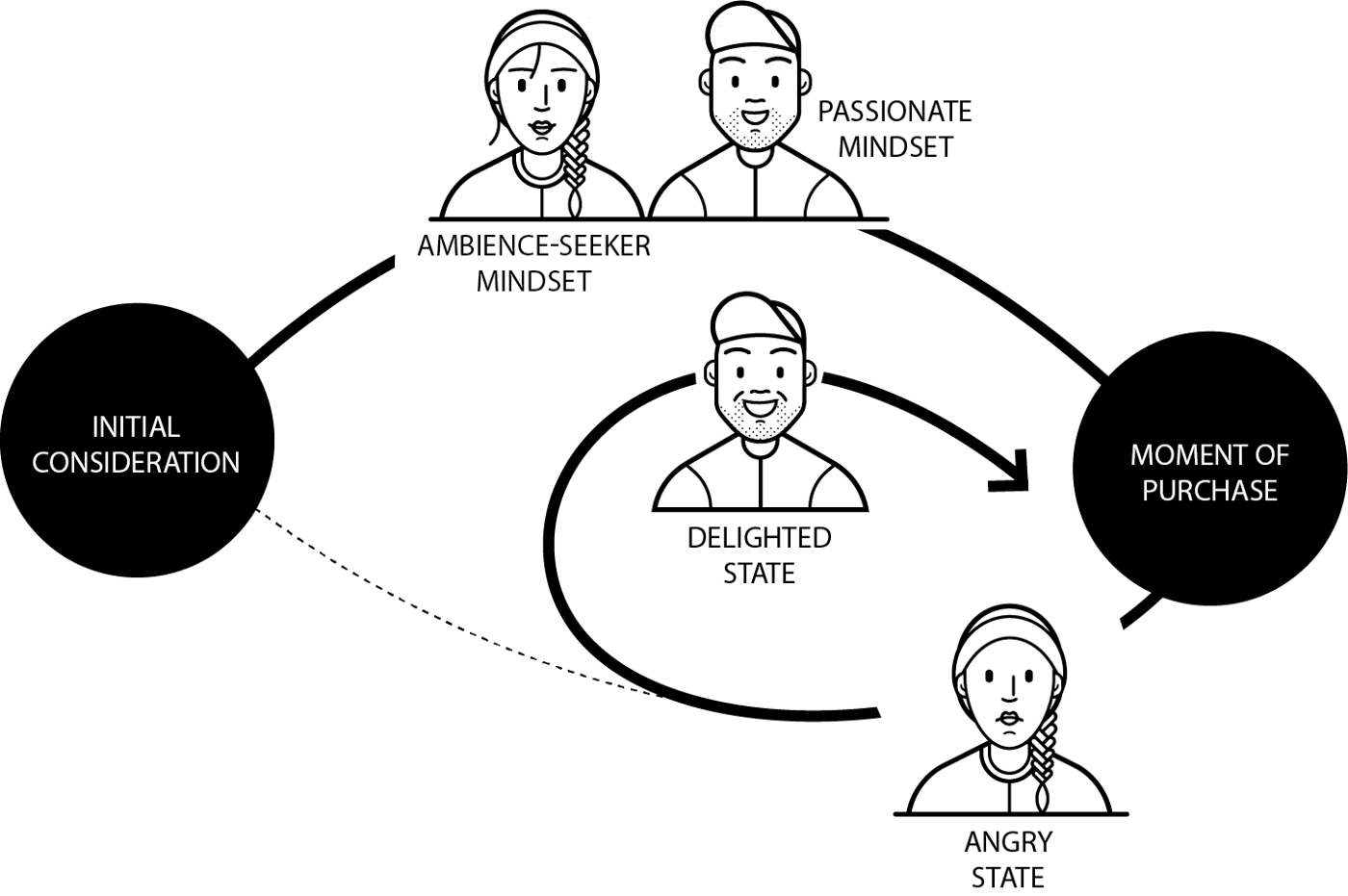
10. Proto personas (or ‘user cards’) #
In her article “some alternatives to personas”, Marianne Brierley talks about using proto-personas. These cards represent a type of user and represent a group of people. Like personas, they are given a name and some ‘needs’.
The cards are easier to make than ‘normal’ personas and because of their size can be used in workshops.
The downside is that these proto-personas will elicit your mind to fill in the blanks again leading to stereotypes. What do you imagine Kelly looks like, when you read the card below?

11. Customer profile #
Found in the highly-recommended and very practical book Value Proposition Design, the customer profile is a very practical way to combine and present data about a customer segment.
In the customer profile you write jobs, pains and gains. Basically: what your customer wants to achieve, what stops him from doing it and what are the benefits on achieving the ‘job’.
What makes this a very powerful tool is the connection to other tools by Strategyzer: the value-proposition-canvas and the business-model-canvas.
The tool is simple to understand in theory, but complex to use in practice. A customer profile visualizes a mix of business decisions and research: you don’t put all jobs, pains and gains you found in the profile, you make a choice which ones are relevant for your business. As such it’s very different from the idea of personas.

12. Empathy Maps #
Empathy maps are a mix between personas and customer profiles. They are less abstract than customer profiles but less uselessly detailed than personas (no “has a dog, is 24 years old and drives a Volvo”). They focus on processes inside the brain: thoughts, emotion, attitude, influences, worries.
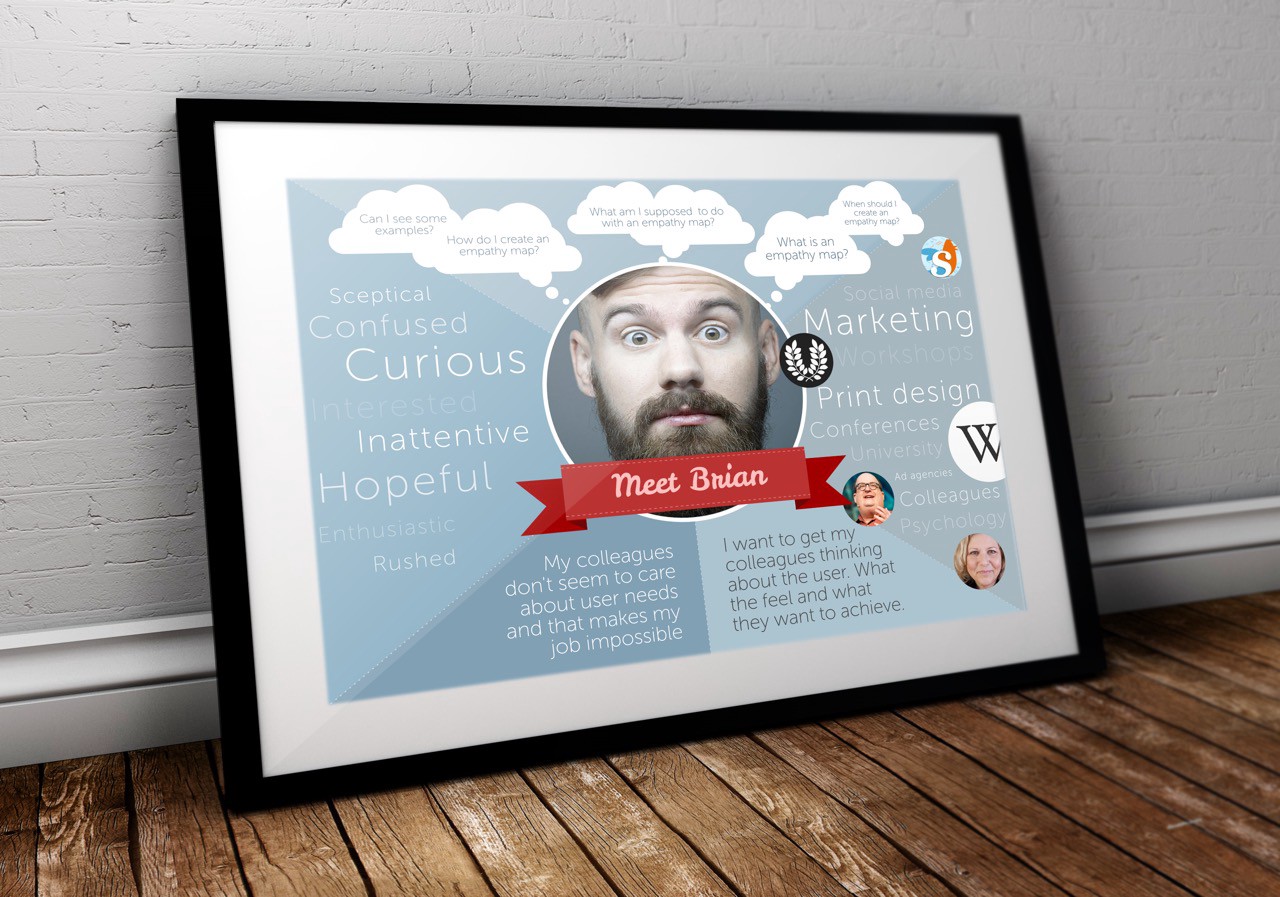
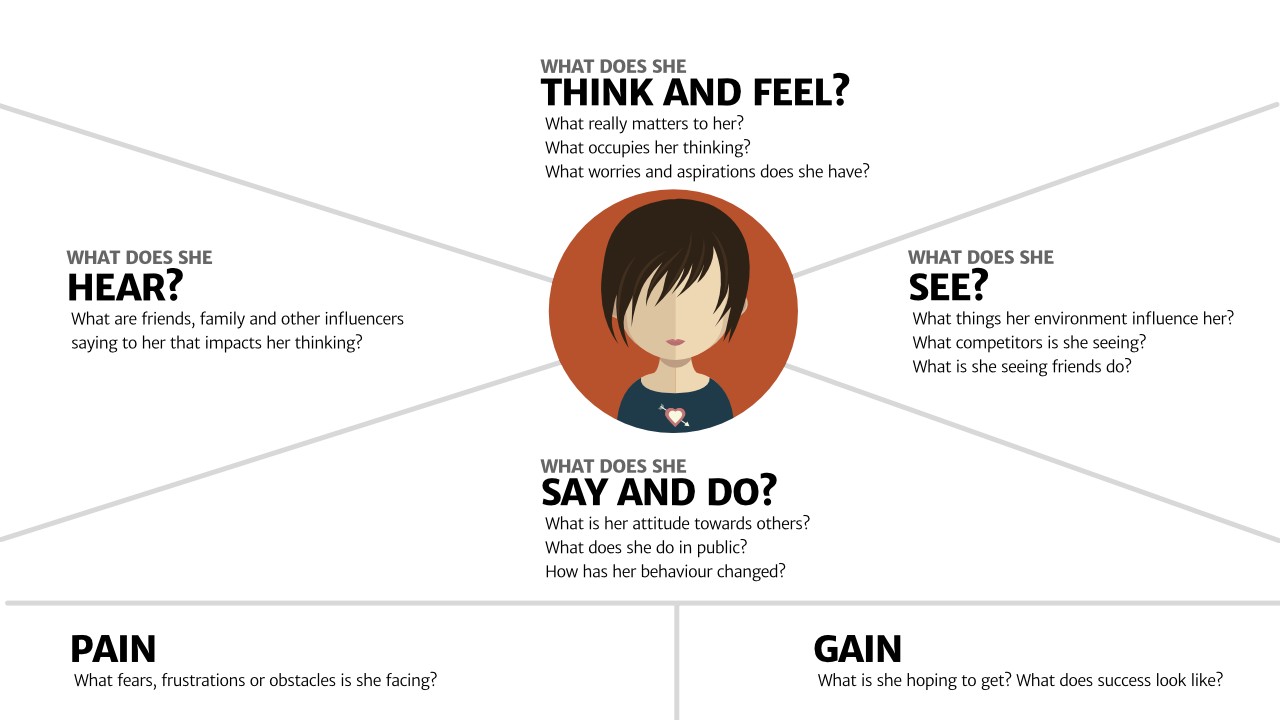
The empathy map suffers from a lot of the same problems as personas do (being mis-interpreted, leading to stereo-types and they are difficult to support with research).
13. Characters #
The methods above (all of them, except Cooper’s traditional persona and the behavioral archetype) describe static properties. They describe a person or group of people detached from time. They describe Timmy with his needs, pains, gains and goals — but they don’t mention where, when or how he has them.
Usually you overcome this by attaching your persona-group to a user- or customer-journey. But Alan Klement has found another way of visualizing this information, by making what he calls a character. This character has motivations and is described together with events and situations.

14. Dynamic Selves #
Lennard Overkamp and Emanuela Cozzi describe dynamic selves in their most excellent article “Beware the cut’n paste persona”.
You represent every individual with multiple ‘selves’, where each ‘serve’ represents a context you investigated. This accounts for people being different in different situations.
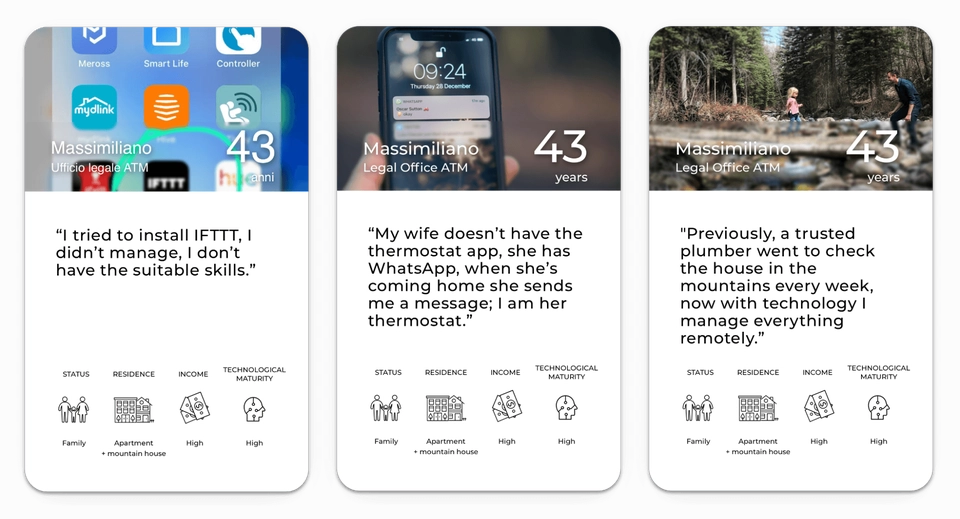
You can then visualize these cards on a canvas and categorize them (much like Pokemapping ) and come to design opportunities within these groups:
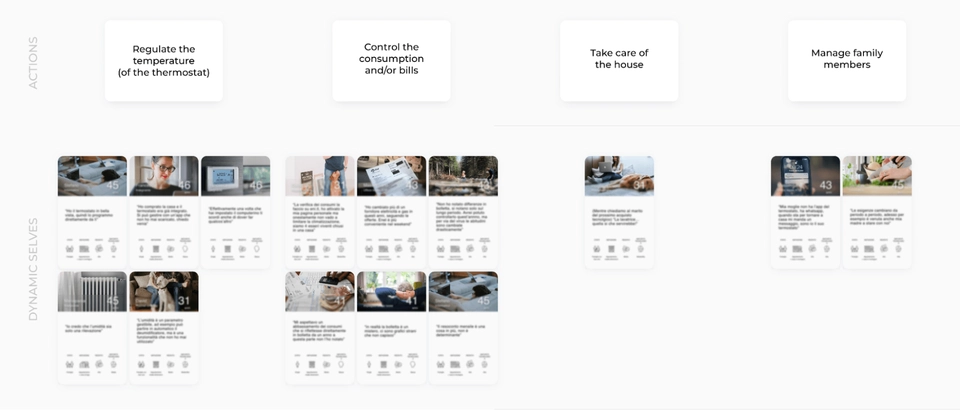
The Dynamic Selves have context. They show events and situations that support motivations behind someones behavior. Big advantage!
By adding in photos of the context, the dynamic selves elicit a feeling for the situation without introducing stereotypes about people.
15. Superflux Archetypes #
We’ve seen the word archetype come by a couple times in this article already. Wikipedia defines archetypes as “the pure form ”, the fundamental characteristics of a thing.
An archetype is the simplest way to describe a concept–in our case a group of people, with all details are stripped.
Example archetypes can be found in movies and books: the hero, the guide, the enemy. These characters are in every movie, but they differ a lot from each other in demographics, temperament, story and appearance. Frodo, Neo, Jesus, Wonder Woman, Bambi. All heroes, all very different.
In a way, archetypes are the ultimate goal for personas: reusable but relatable.
But alas! Like most ideals, the idea fails in practice. Why? Because abstraction by definition means removing practical details, making an archetype useless to communicate research-results to make decisions in a business setting.
But there are other uses for archetypes. Take a look at Superflux’s cool Tarot-card deck with ’the usual suspects’ of archetypes. Use it to get creative thinking going in an ideation part of a project or to broaden your thinking during a workshop.
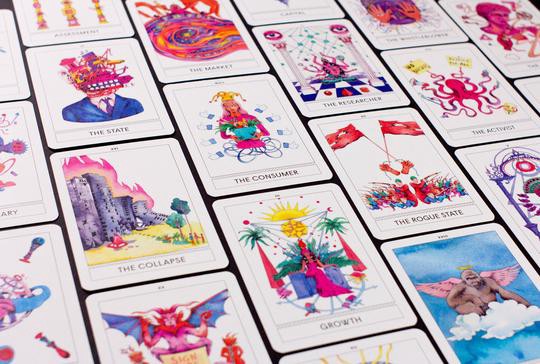
16. Switching forces framework #
A powerful moment in a customer’s journey is the moment they stop using your product and start using your competitor’s product. Or the moment where they stop using their own homegrown method and start using your product.
You can visualize the reasons behind these switches using the Switching Forces framework (see image below). Simply copy/paste the image onto a Miro board and add post-its describing the findings from your research in each quadrant. To get the best results, you use a technique called ‘switch interviews’, which you can learn about by listening to this podcast or reading this book by Chris Spiek and Bob Moesta.

17. Baseline behavior #
Another way to visualize change is by using the baseline behavior map, which I saw in the talk by John Cutler at SofaConf 2020.
Baseline behavior is a decision/alignment tool instead of a ‘user research visualization tool’. You use it before research, or during, or even after the launch of your product.
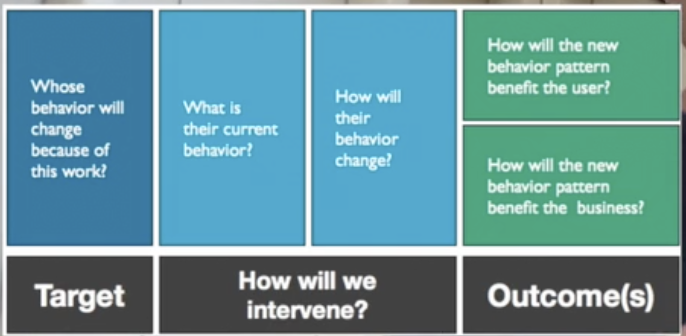
Other ways to visualize your user research #
Besides personas, there are other ways to visualize your user research: task-flows, mental models, user-/customer-journeys, jobs-to-be-done, asset-maps, Triptech, user clocks, and …
Most of these can be combined with any method or tool mentioned above.
Closing thoughts #
I think user-research works best when it is specific and opinionated.
Don’t try to create personas that are everlasting. They are too general. Pick your tools specifically for the research question. Be scared to reuse your findings because context matters.
Make your research count. Be opinionated. Your stakeholders should not search around in your your persona to get an answer. They shouldn’t make complex interpretations. That’s your job as a researcher. Don’t communicate everything you find, but interpret your data and make a story related to the problem at hand. Make it easy to make a decision and get on with the work.
Sometimes you don’t need to segment your audience at all. Gerry McGovern advises against using audiences in his seminal work on top tasks.
I’ll leave you with this quote by Radina Denova:
The main thing to keep in mind is that creating personas […] is not an end in itself. They are a* decision-guiding tool *and as such, they need to be tailored to each individual project to serve its purpose.
source